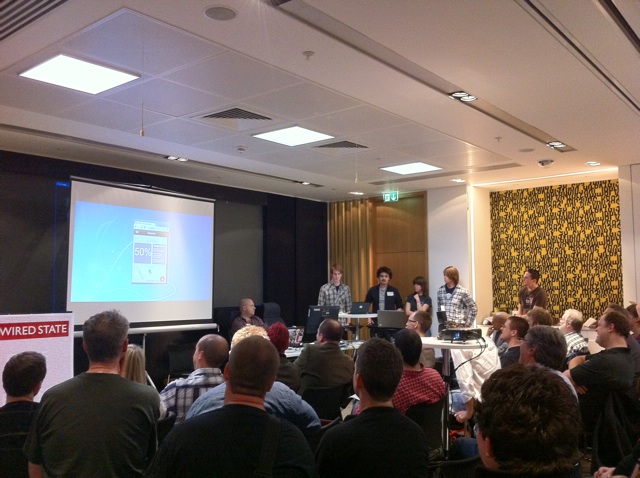
There’s been a lot of buzz about the G-Cloud today and over the weekend, and rightly so. It’s a potentially exciting development, and a real achievement for Chris Chant and his team. Not only have they set out, aggressively in Civil Service terms, to get a better deal for taxpayers, but they’ve also managed the process with truly impressive openness and frankness.
It’s exciting to see little ol’ Helpful Technology alongside the likes of CSC and Capita on the newly-announced G-Cloud Store (we’re under Specialist Cloud Services, offering digital engagment support, training and integration of tools such as WordPress).
But I’m keeping my feet on the ground. I won’t be rolling out the new Universal Credit transaction or equipping police forces with BlackBerrys (nor would I want to). I may not even get much of a sniff at contracts for things I do do, like helping public sector people develop the skills needed to work in social media and cloud technologies. And that’s OK, because the G-Cloud is really three things:
1. It’s a way to buy IT-as-paperclips
Plenty of IT services are digital commodities, pretty much – things like compute cycles and storage space. Amazon demonstrated that you could sell them as such, and now the UK Public Sector can more easily buy them as such. Servers are servers, and it’s about time the cost and speed of provisioning servers for government projects, for example, was subjected to some harsh competition.
2. It’s a sensible model for 2.0-style subscription services
While the G-Cloud store still features the likes of Capita, CSC and co pretty prominently, it’s awesome to see friends like Huddle, Learning Pool and Delib (for which I’m an associate), on the framework too.
What they offer really does transform government IT, but until now they’ve faced real headaches getting procured on a subscription model, rather than as bespoke, fixed-price projects. I remember my own experience bringing Huddle in to DIUS in 2009, and the hoops that helpful COI chums had to jump through to help me save taxpayers’ money on them. Times have changed.
3. It’s a state of mind
Chris clearly thinks it’s big news:
171631766241677312
I might not go that far right now, but as much as anything, G-Cloud symbolises a willingness to tackle procurement barriers preventing SMEs from winning government work; a new ethos of easy come, easy go relationships with suppliers; and an endorsement for cloud services offering better quality and value than the alternatives, including no-nonsense accreditation.
https://twitter.com/#!/pubstrat/status/171668815409709056
There are some things that niggle me, and one or two deeper worries. The Govstore is a good first iteration, but maybe highlights the dangers of free. The foolish and short-termist abolition of COI has taken with it a number of relevant frameworks for digital communications services, and perhaps even more importantly the savvy and experienced brokers who managed them. G-Cloud is often posited as the replacement, but COI didn’t really trade in commodities, and Helpful Technology isn’t really fungible. And maybe my deeper worry is that underlying cultural barriers will still tend towards larger all-in contracts with bigger players.
171610842872287232
Oddly, all within the same week, I heard that I’d been set up as a preferred supplier to one of the big Systems Integrators, and been turned down from the DfE’s Creative Choice ‘black box’ service company.
As with all things in government, a wise SME will hedge its bets. Look up at the sky, keep your feet on the ground.

Comments
Early on in your post you hit on an important aspect for me; that Helpful Technology is a service integrator. I think it’s service integrators who will replace COI in this transaction model. I can see a model similar to that of an independent financial advisor, an independent technology advisor if you like, who can make sense of the new marketplace and find ways to stitch the different offerings together into useful and coherent solutions.
I like that idea.
Whether there’s the culture and awareness internally to get individuals or small outfits like mine to do that stitching, I’m not sure. As a COI-er, I certainly found it easier to nix bad client ideas frankly and quickly than I do now, where it’s easy to be seen as just plain obstructive.
But let’s be optimistic, and hope things are shifting that way.